Radiation therapy can be an effective tool when used alone or as part of a multimodal treatment plan for cancer treatment in pets. While it’s often a necessary step, the process may cause side effects that vary depending on the area treated. Knowing what to expect—and how to help your pet recover—can make this journey smoother for both of you.

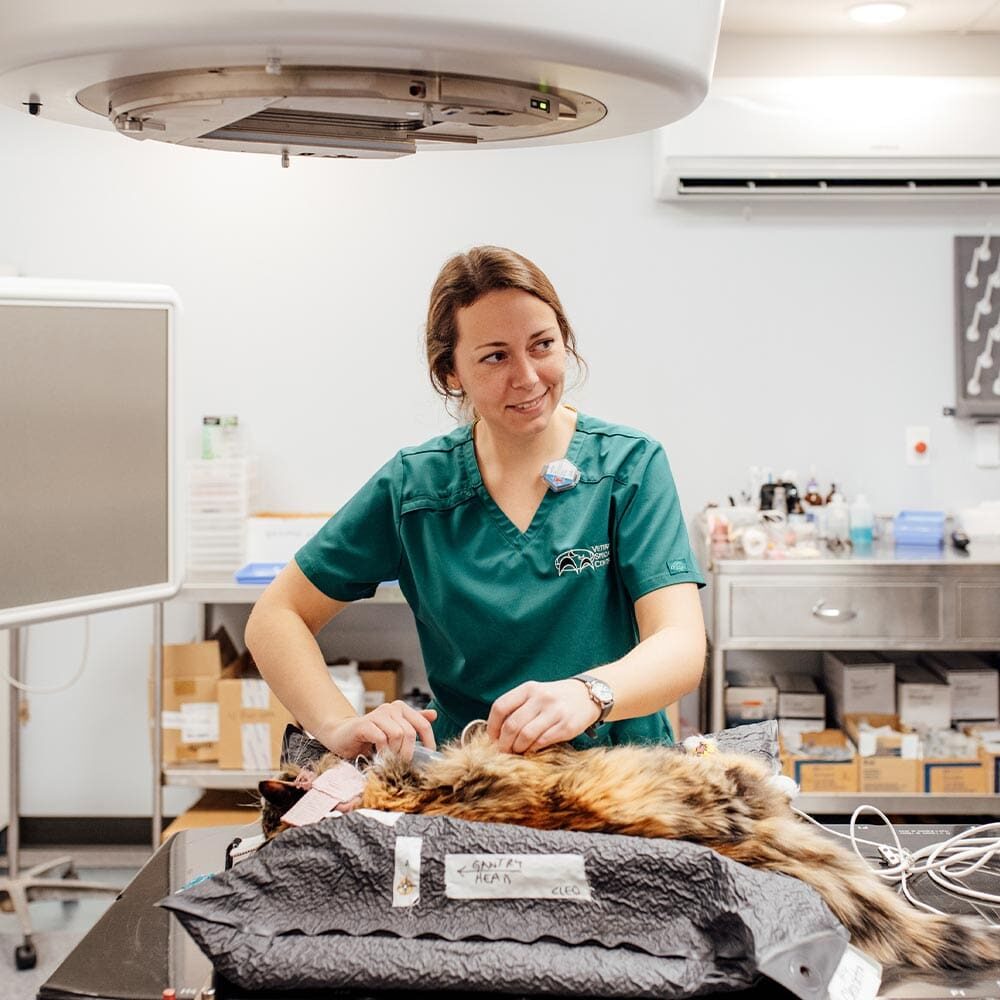
Adverse Radiation Effects (ARE) in Pets
Radiation therapy side effects are classified as early or late based on when they appear.
Early Effects: Short-Term Reactions
Early effects often develop around 2 weeks into treatment and may continue for up to 2 weeks after therapy ends. These reactions typically affect fast-growing tissues like the skin and mucous membranes in the mouth and nose, which can become irritated or inflamed. While uncomfortable, these effects are temporary and typically resolve within 3 to 4 weeks.
Late Effects: Long-Term Changes
Late effects appear in tissues with slow-growing cells, such as the brain, spinal cord, heart, and bones. These changes usually occur 6 months or more after treatment and may even emerge years later. Though rare, late effects can be serious and may not resolve over time.
In extremely rare cases, radiation may lead to a secondary tumor years after treatment. These tumors occur within the treated area and are distinct from the original tumor.
Lymphedema
In rare cases, pets receiving radiation around an entire limb may develop swelling (lymphedema) in the area below the treatment site. This occurs weeks to months after therapy, as radiation can damage the lymphatic vessels responsible for draining fluid from tissues. Treatment includes physical therapy and pain management.

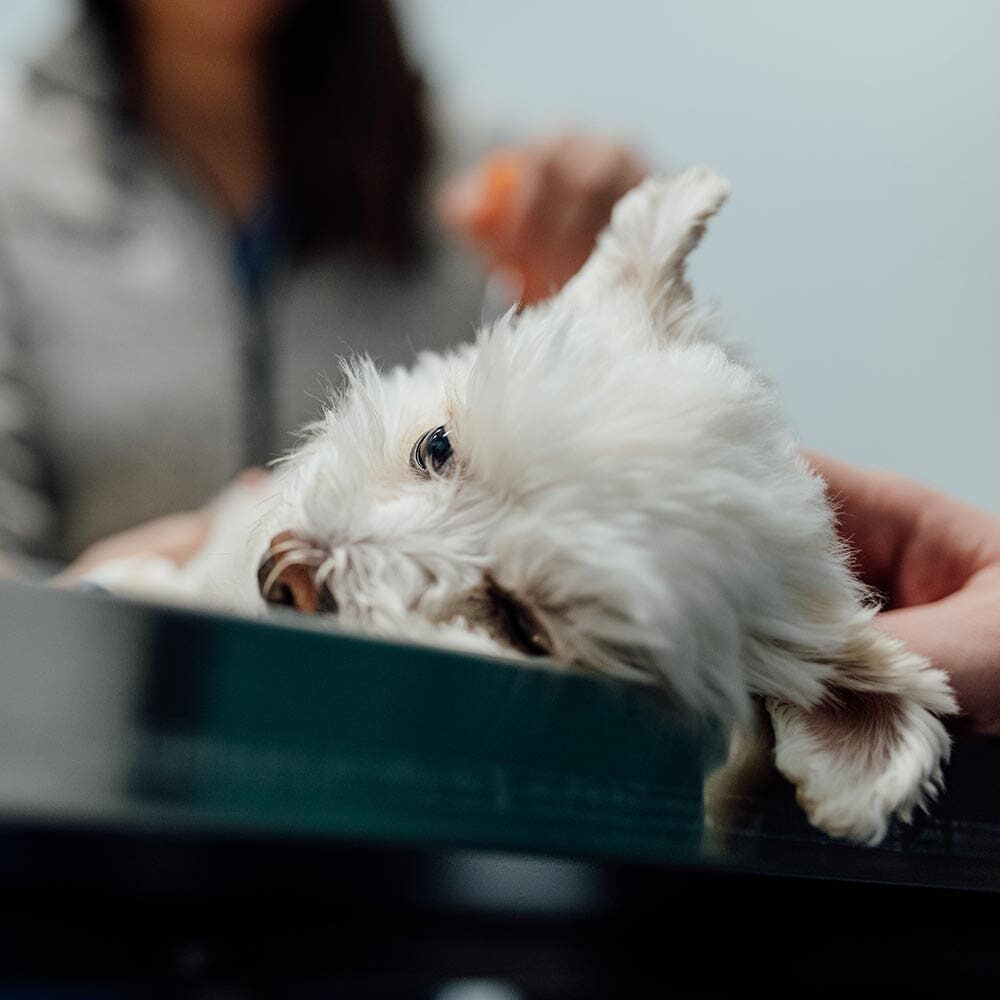
Skin Effects
When treating tumors on or near the skin, radiation can cause skin reactions, typically starting in the second week. This often begins with redness, followed by irritation and ulceration. Pets may try to scratch or lick the area, which can delay healing and increase the risk of infection, so E-collar use is imperative. Skin reactions may continue to worsen through the end of therapy and peak shortly after, generally healing within 2 to 4 weeks if managed properly.
Hair loss around the treatment area is common and typically occurs by the third week. Hair usually regrows in 3 to 6 months, though sometimes with a different color or texture. Hair loss can also be permanent in some instances.
Please check with your oncologist before applying any topical products to the radiation site.

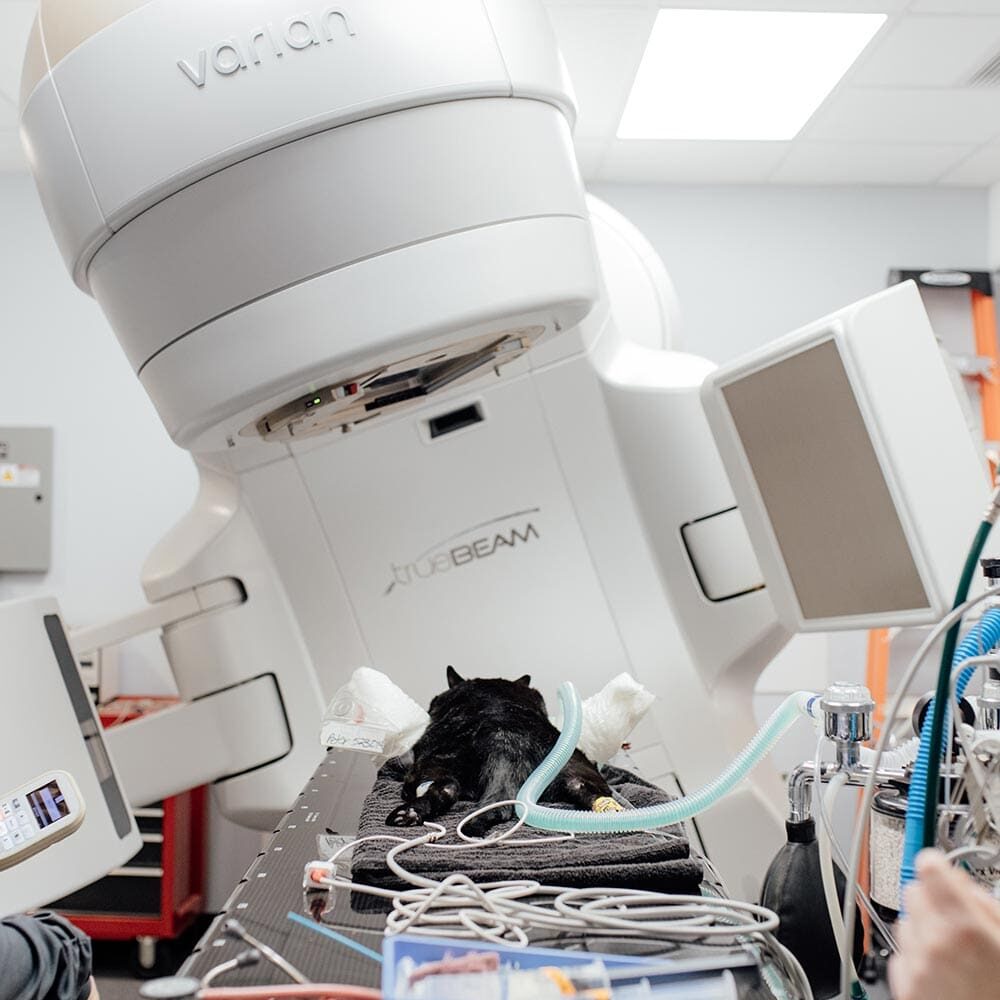
Oral Cavity, Esophagus, and Trachea Effects
Pets with tumors in the jaw, palate, nasal area, or those with brain or skull tumors may develop side effects in the mouth. Radiation can cause mucositis, where the mouth lining becomes red, swollen, and ulcerated, forming yellow-gray plaques. Saliva may thicken, leading to increased drooling and bad breath. Many pets experience reduced appetite due to discomfort and potential loss of taste. Experimenting with various foods—like cooked chicken, turkey, hamburger, or baby food (without onion and garlic)—can help find appealing options. Some pets prefer food served in small, hand-fed bites or warmed for added interest.
In addition to oral effects, side effects can occur in the esophagus and trachea, especially if tumors are located in the neck or chest. Radiation may cause similar mucositis in these areas, leading to a dry, hacking cough, decreased appetite, vomiting or regurgitation, and painful swallowing. Excessive salivation may occur if pets struggle to swallow. Although late side effects, such as scar tissue formation, are rare, they can cause narrowing of the esophagus, making swallowing solid foods difficult or, in severe cases, impossible.
Maintaining proper hydration and nutrition is crucial during treatment. If your pet struggles to eat enough, a temporary feeding tube may be recommended, which most pets tolerate well.
Nasal Cavity Effects
The nasal lining can be affected by radiation, similar to the mouth. Pets with nasal tumors often have discharge before treatment, which may increase and vary in color during radiation. This usually improves 2 to 4 weeks after therapy but may not completely resolve due to prior tumor damage. Additionally, the nasal cavity’s defenses are weakened permanently, making pets more prone to chronic rhinitis months to years later.
If you notice increased or yellow-green discharge, seek veterinary care, as antibiotics may be needed. Sneezing and congestion usually improve after treatment but may persist in some cases.
Eye Effects
When treating tumors in the nasal, oral, or brain regions, one or both eyes may be affected by radiation, despite efforts to avoid this. Radiation can irritate the superficial layers of the eye and inner eyelid, leading to conditions like keratitis and conjunctivitis. It can also damage tear glands, resulting in keratoconjunctivitis sicca (KCS) or "dry eye," which may develop 2 to 6 weeks post-treatment and can be temporary or permanent.
The lenses of the eyes are also sensitive to radiation and may develop cataracts 6 to 12 months after therapy, potentially leading to blindness in the affected eye. If blindness significantly impacts your pet's quality of life, cataract surgery may restore vision.
A pre-treatment consultation with an ophthalmologist for a full eye exam is recommended to establish a baseline for monitoring radiation effects and identify any existing conditions. Follow-up eye exams may be necessary based on initial findings, and tear production tests should be conducted before radiation, 2 weeks after, and 4 to 6 weeks after treatment for high-risk patients.
Ear Effects
When treating tumors in the brain or skull, one or both ears may be affected by radiation. The epithelial lining of the ear canal can become irritated, resulting in redness, ulceration, and ear discharge. Some pets may experience hearing loss.
To alleviate irritation, your clinician may prescribe ear drops. Additionally, some pets may develop chronic ear issues, such as scratching or rubbing. In rare cases, changes to the inner ear can cause a head tilt or balance disorders, which may be temporary or, in rare instances, permanent.
Brain and Spinal Cord Effects
Pets with nasal or oral tumors may have parts of the brain in the radiation field, but neurologic abnormalities are uncommon unless they are already present. If they do occur, they typically arise more than 6 months after treatment. Those treated for brain tumors are at a higher risk for side effects, which are categorized as acute, acute delayed, and late effects.

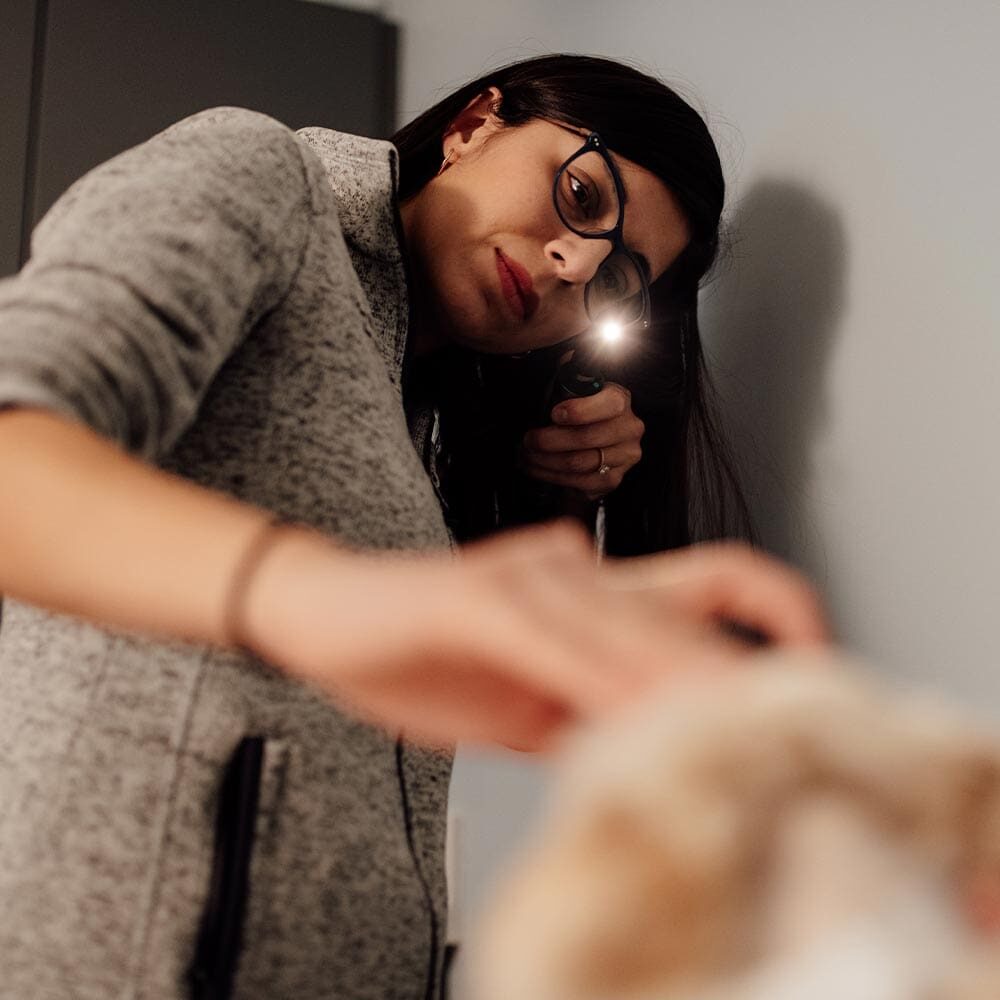
Acute Effects
These can occur immediately to 2 weeks after treatment and are often related to anesthesia, which may raise intracranial pressure and cause neurologic symptoms that range from mild lethargy to seizures.
Acute Delayed Effects
Occurring in about 10% to 30% of patients 2 to 6 months post-treatment, these effects are likely due to swelling and inflammation from radiation or dying cancer cells. Symptoms may worsen neurologic signs, but most cases respond well to steroids.
Late Effects
These can develop 6 months or years after treatment and may cause reduced mobility, paralysis, or neurologic signs like changes in awareness, behavior, or seizures.

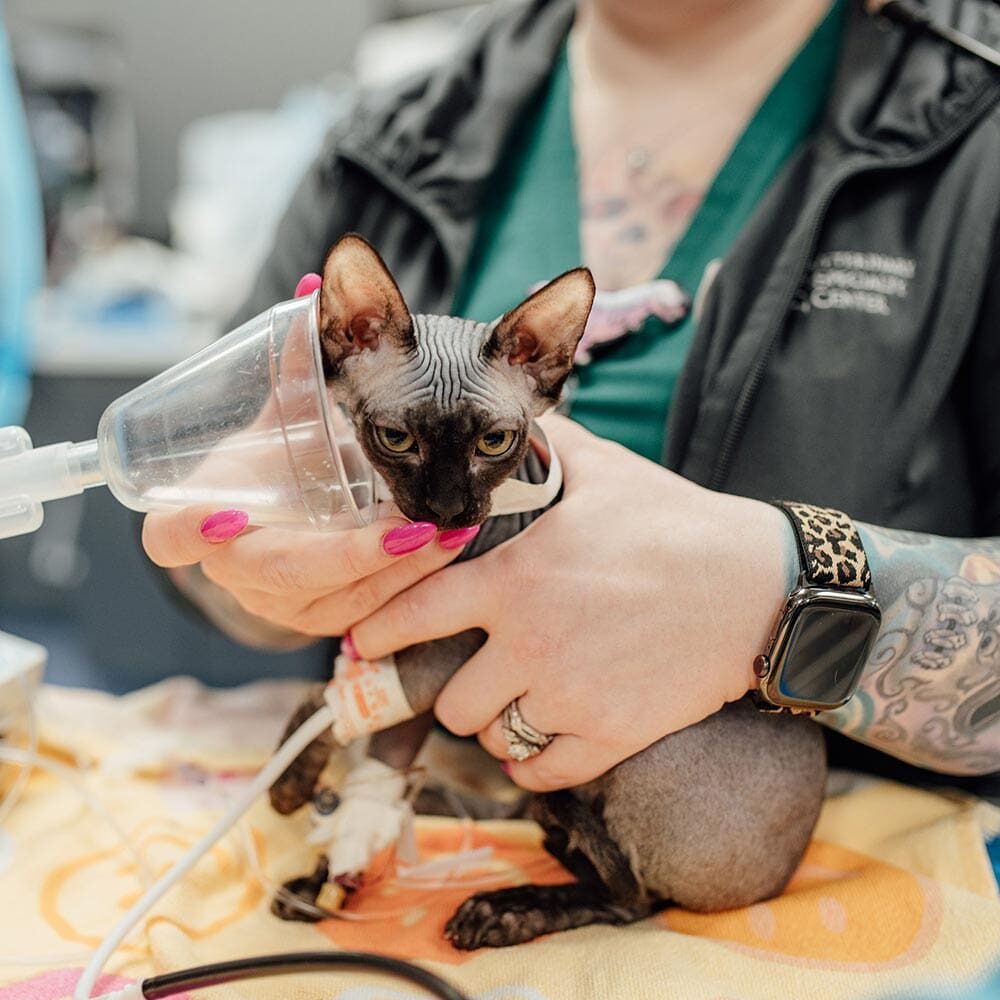
Lung Effects
Pets with nasal or oral tumors may have parts of the brain in the radiation field, but neurologic abnormalities are uncommon unless they are already present. If they do occur, they typically arise more than 6 months after treatment. Those treated for brain tumors are at a higher risk for side effects, which are categorized as acute, acute delayed, and late effects.
Phase 1: Pneumonitis
Developing 2 to 6 months post-treatment, pneumonitis involves lung inflammation. Most pets show no symptoms, but some may experience a cough or difficulty breathing. Pneumonitis is typically temporary and can be managed with medication if needed.
Phase 2: Fibrosis
Scarring (fibrosis) of lung tissue can occur 9 to 12 months after radiation, even at low doses. The affected lung tissue becomes non-functional, but most dogs and cats maintain an excellent quality of life with 50% to 66% of their normal lung capacity.
Bladder and Colon Effects
When treating pelvic tumors, portions of the colon, rectum, and bladder may be included in the radiation field. These organs have rapidly dividing cells, similar to the skin and oral cavity, making them susceptible to radiation-related irritation such as:
-
Colitis
Symptoms can develop around the second week of treatment and may persist for 2 to 4 weeks afterward. Signs include diarrhea, which may contain mucus or small amounts of blood, and increased frequency of defecation. Some pets may experience long-term intermittent colitis.
-
Cystitis
Inflammation of the bladder can occur with similar symptoms, including straining to urinate, blood in the urine, or increased urgency to urinate. Medications or dietary changes may be recommended to help manage these symptoms.
Diarrhea occurring within 1 to 3 days of starting radiation therapy is typically due to stress from hospitalization, not radiation itself. This stress-related colitis is usually treated with oral medication and may improve as the pet adjusts to the treatment routine.
Late Side Effects
Rarely, scar tissue can form months after radiation, potentially leading to strictures in the colon or bladder. Circumferential scar tissue can cause stool passage difficulties or urinary straining. Complete obstruction of urine flow is an emergency. Procedures like "ballooning" or stent placement may alleviate rectal strictures, but stents can lead to incontinence.
Small Intestines Effects
Irritation of the small intestines (enteritis) can develop during radiation treatment, typically starting at the end of the second week and lasting for 2 to 4 weeks post-treatment. Symptoms may include watery diarrhea and increased frequency of defecation.

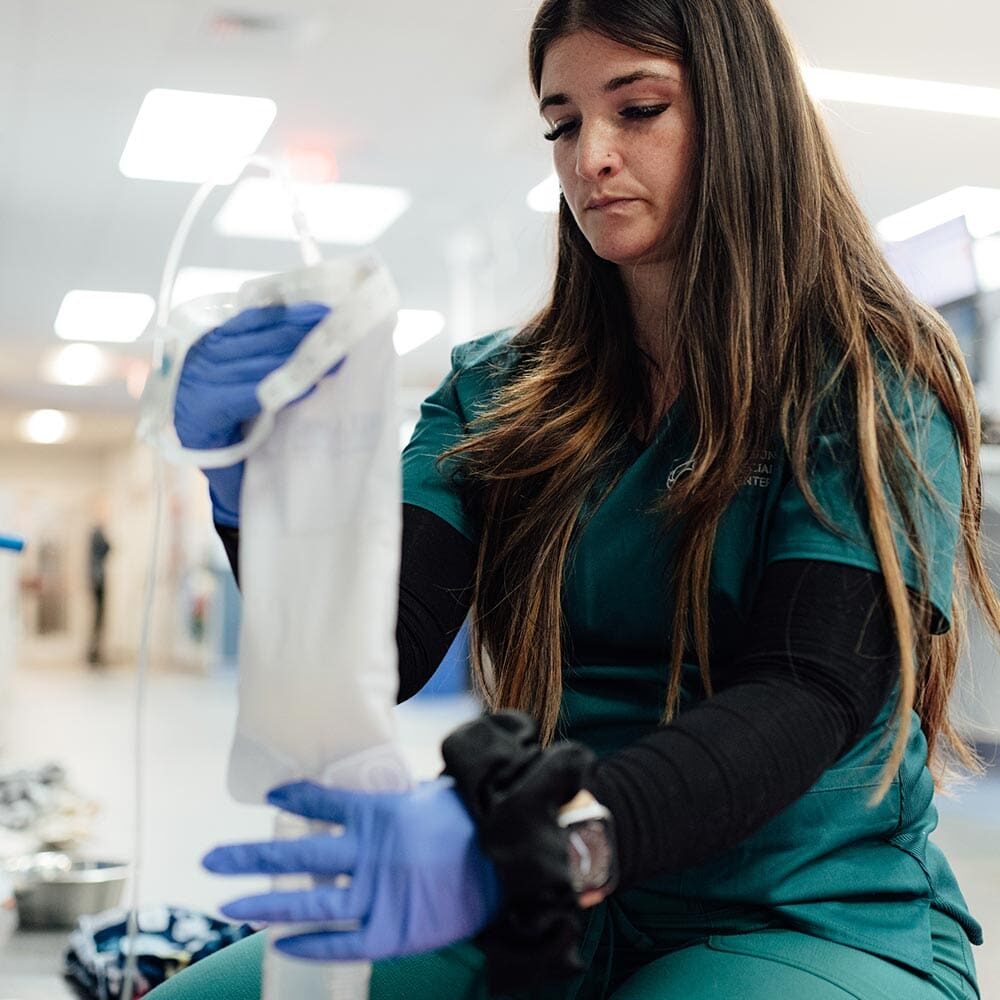
Feline Abdominal Effects
Approximately 60% of cats undergoing abdominal radiation experience mild and transient gastrointestinal upset, including vomiting, diarrhea, and decreased appetite. Around 50% may also show changes in blood cell counts during or weeks after treatment, necessitating periodic blood work. While few cats display clinical signs of liver damage, elevated liver enzymes may be detected in follow-up tests. More concerning is potential kidney toxicity, especially in older cats with pre-existing kidney issues, as radiation can worsen their condition.

